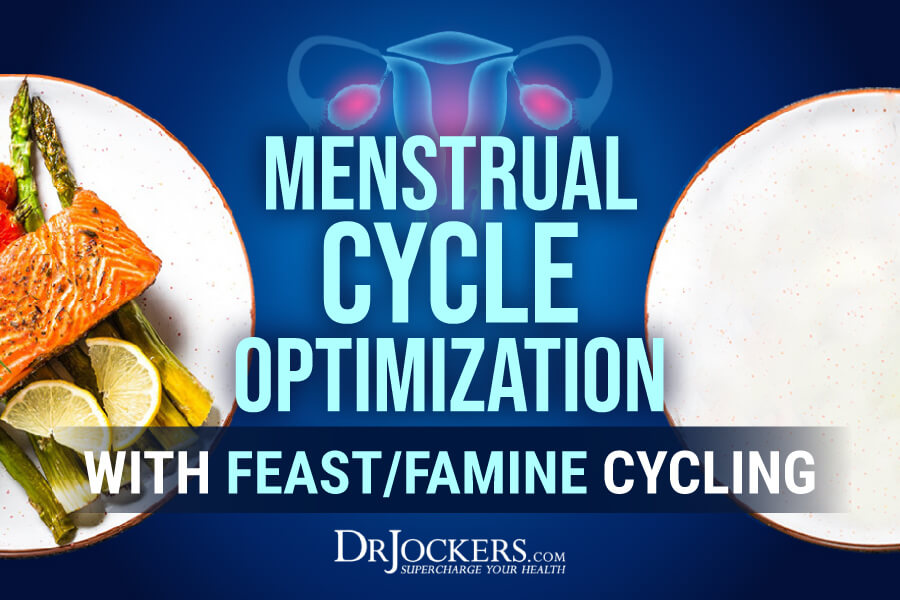 Menstrual Cycle Optimization with Feast/Famine Cycling
Menstrual Cycle Optimization with Feast/Famine Cycling
If you are a woman of reproductive age, you may be wondering how you can support and optimize your menstrual cycle naturally. You may be curious if fasting is healthy for women. You may also want to know how to reduce PMS symptoms and other symptoms related to your menstrual cycle through natural means.
You are not alone. Many of my female patients and readers are asking the same questions. The good news is, yes, you can practice fasting as a woman as long as you pay attention to feast famine cycling. You can support your menstrual cycle and reduce unwanted symptoms through feast famine cycling and nutritional support naturally.
In this article, you will learn about the menstrual cycle. I will explain why feast famine cycling is important and how to practice it during your menstrual cycle. I will share some of the best foods that can support your menstrual cycle. I will also share some of the best supplements that can optimize your menstrual cycle and reduce menstrual symptoms.

What Is The Menstrual Cycle
The menstrual cycle is a natural hormonal process that the female body goes through every month between puberty (around age 12 on average) and menopause (between 50 and 55 on average). It is your body’s way of preparing for possible pregnancy and shedding tissue if pregnancy doesn’t happen.
The length of the menstrual cycle is about 28 days on average, however, for some women, it’s somewhat shorter and for others, it is somewhat longer. It is important that you track and know your cycle, and if you notice unusual changes in the length of your cycle, visit your doctor to uncover potential hormonal or other issues (1, 2).
Follicular Phase
The follicular phase of your menstrual cycle begins on the first day of your period and ends at the start of ovulation. At the beginning of the follicular phase, your hypothalamus sends a message to your pituitary gland that it’s time to release the follicle-stimulating hormone (FSH) which prompts your ovaries to produce 5 to 20 small follicles with immature eggs.
In most cases, only the healthiest egg matures, however, on some occasions, you may have two eggs that mature during the same cycle. The remaining follicles get reabsorbed into your body. This process results in a surge in estrogen and the thickening of your uterine lining to prepare your body for a potential pregnancy. The follicular phase lasts for 16 days on average, but it may range from 11 to 27 days depending on the person.

Ovulation
Ovulation marks the end of the follicular phase. Increased estrogen levels result in the release of luteinizing hormones (LH) that trigger ovulation. During ovulation, your ovary releases a mature egg down the fallopian tube toward the uterus. At this time the egg is ready to be fertilized by a sperm. If you want to get pregnant, it’s important that you are tracking your cycle, and aware when ovulation occurs.
At this time you may notice a slight rise in basal body temperature and a thicker discharge. Ovulation happens around day 14 for those with a 28-day cycle, however, if you have a longer or shorter cycle, it may be on another day in the middle of your menstrual cycle. It lasts for 12 to 48 hours. If the egg isn’t fertilized, it will die and dissolve.
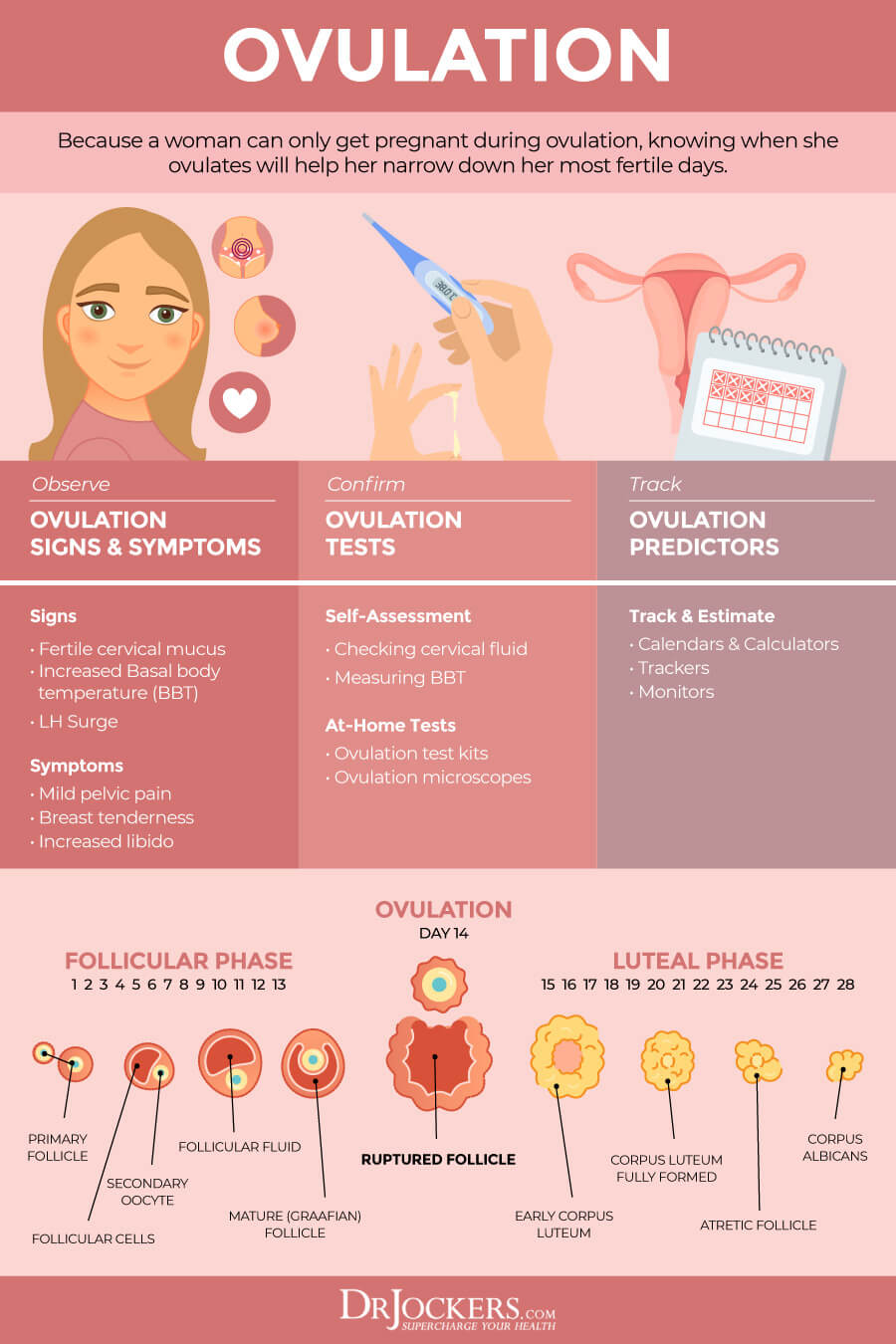
Luteal Phase
After the follicle phase, the egg changes into something called the corpus luteum, which releases mostly progesterone and some estrogen to allow a fertilized egg to implant. If your eggs get fertilized and pregnancy occurs, your body will produce human chorionic gonadotropin (hCG) which helps to keep the corpus luteum healthy and the uterine lining thick.
This is the hormone that pregnancy tests detect as well. If pregnancy doesn’t occur, the corpus luteum shrinks and reabsorbs resulting in a decrease of estrogen and progesterone and getting your body ready for menstruation.
During this time you may experience premenstrual syndrome (PMS) symptoms, including bloating, breast tenderness, headaches, cravings, weight gain, and mood changes. Through dietary and lifestyle changes, however, you can decrease or eliminate these symptoms.
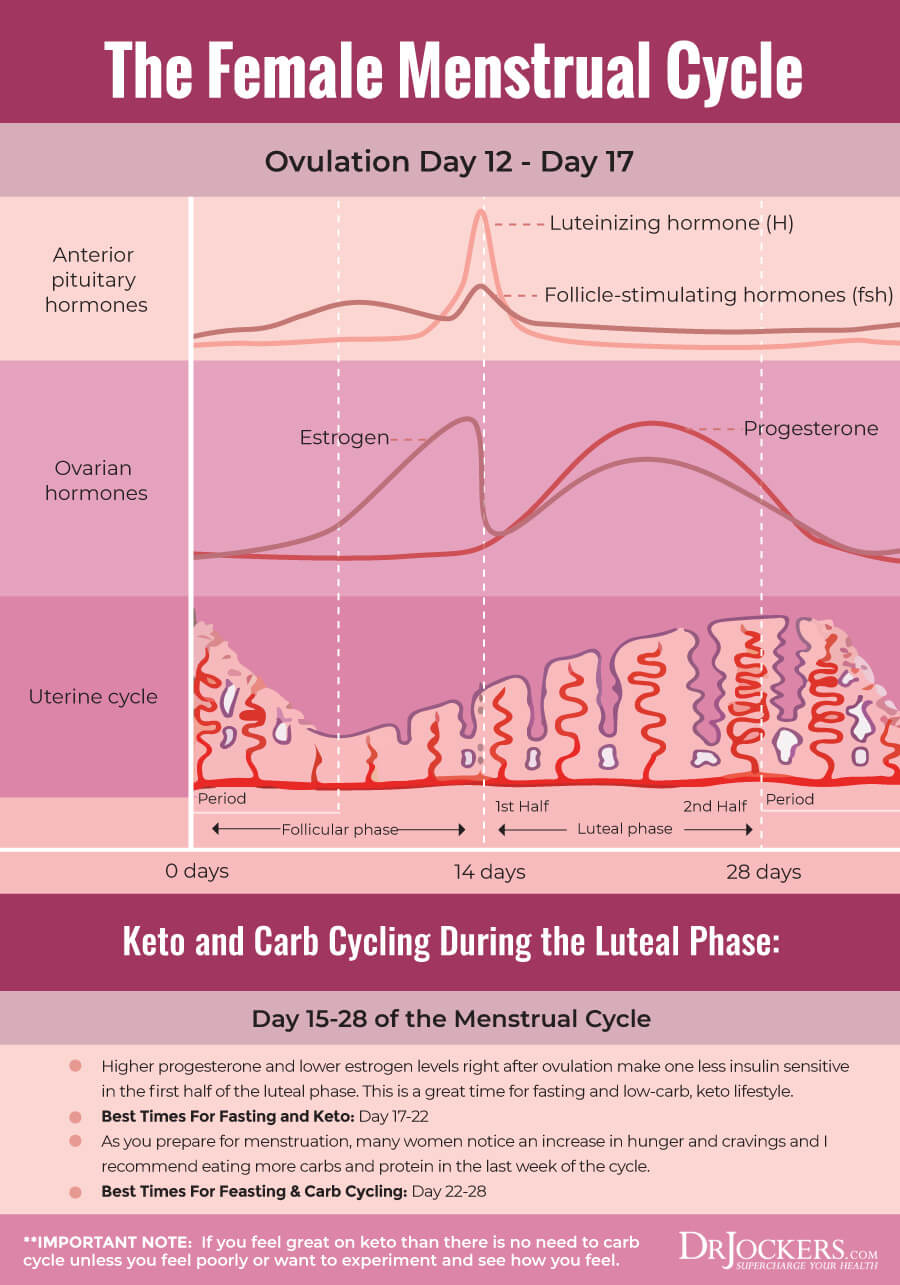
Menstruation
Menstruation is the stage of the menstrual cycle when you get your period. This phase begins when the egg from the previous cycle isn’t fertilized and pregnancy doesn’t take place. Estrogen and progesterone levels decrease. The thickened uterus lining shreds through the vagina along with blood, mucus, and unwanted tissue.
Your period may last anywhere from 3 to 7 days. While individual variations are normal, it is important to visit your healthcare provider if you notice unusually light or heavy, short or long, or painful periods. While many women experience cramps, bloating, headaches, breast tenderness, or mood swings during this time, through dietary and lifestyle changes, you can decrease or eliminate these symptoms. Later in this article, you will learn about some foods and supplements that can support a healthy menstrual cycle.
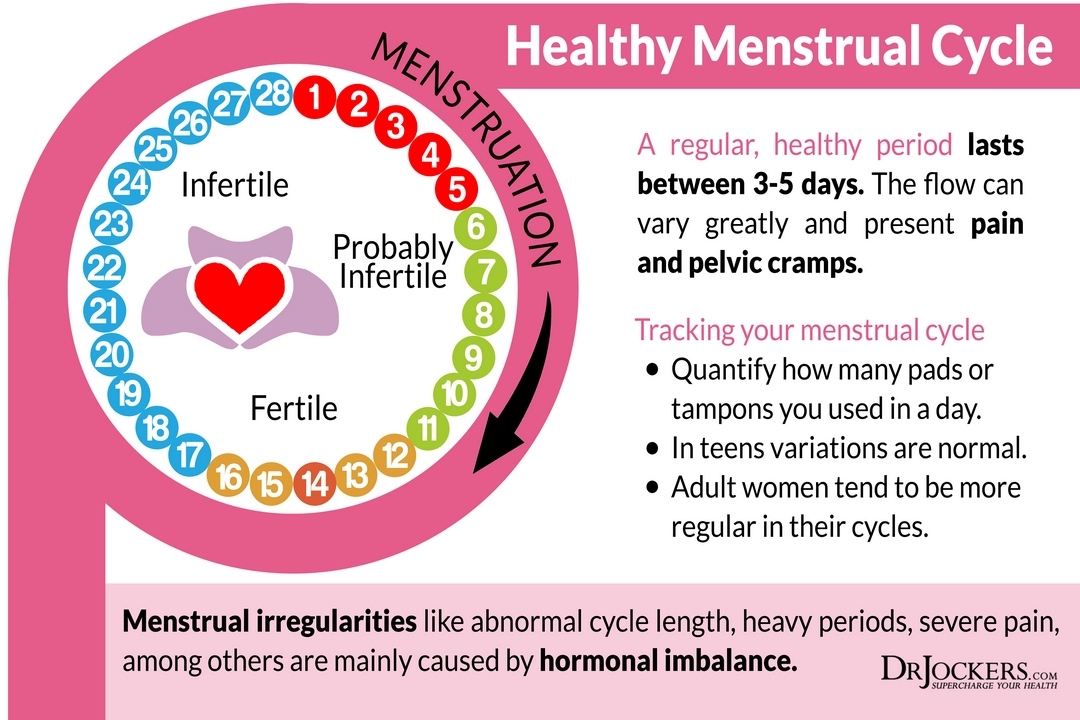
The Importance of Feast Famine Cycling
When people think about intermittent fasting or extended fast, they are usually concerned about the fasting part. However, feasting is just as important as fasting. Feast famine cycling is an eating concept derived from our ancestral roots that offer countless health benefits.
The benefits of fasting include reduced inflammation, stimulated cellular autophagy, enhanced fat burning, improved insulin, and improved energy levels. However, calorie restriction from fasting can have some downsides to it, including potential hormonal imbalance, which is particularly important for women with a menstrual cycle. This makes feasting absolutely critical.
Feasting allows you to nourish your body with nutrient-dense foods. It helps to create hormonal optimization, regulate cell-growth, improve cleansing pathways, reduce inflammation, improve your immune system, boost lean body tissue development, and enhance mental health and emotional well-being.
Feast famine cycling can also improve insulin sensitivity, improve your relationship with food, stimulate stem cell development, and reduce the risk of chronic disease. To learn more about feast famine cycling, I recommend reading this article (3, 4, 5, 6, 7, 8, 9, 10, 11, 12, 13, 14, 15, 16, 17).
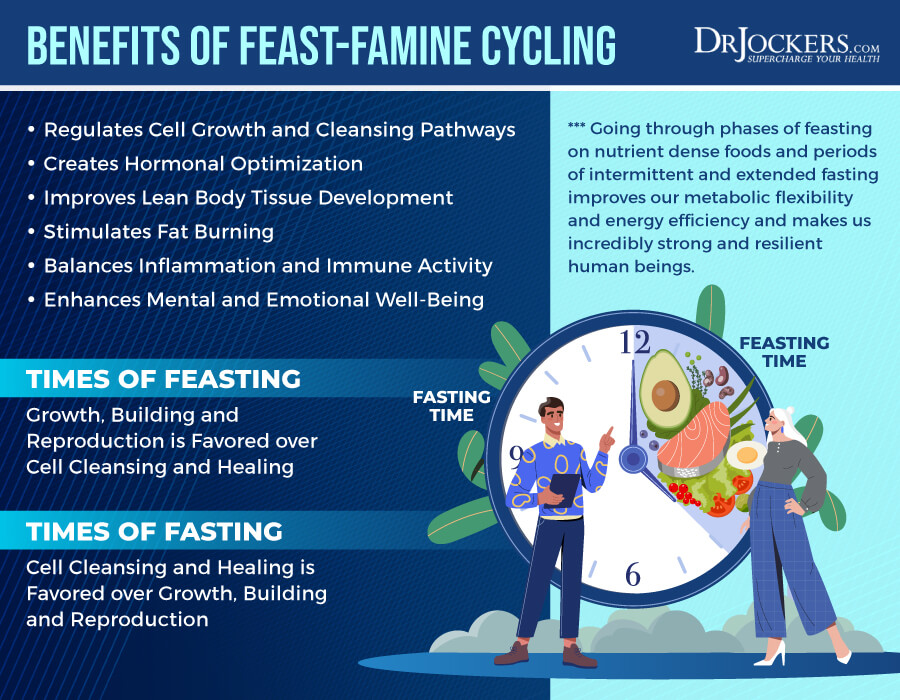
When To Fast
While feast famine cycling is incredibly beneficial, women have to be even more intentional than men. Female bodies can be extremely sensitive to calorie restriction and restrictive diets. Low calorie intake from fasting or restricting certain nutrients can impact the hypothalamus and disrupt gonadotropin-releasing hormone (GnRH) release, which is responsible for the release of the follicle-stimulating hormone (FSH) and luteinizing hormone (LH) that are critical for your menstrual cycle, hormonal function, and reproductive health.
If these hormones are not functioning properly, it may result in irregular periods, amenorrhea, infertility, ovary reduction, and poor bone health (18, 19, 20, 21). To protect your hormonal and reproductive health and optimize your menstrual cycle while benefiting from feast famine cycling, it is critical that you pay attention to when you are fasting and when you are feasting. You not only have to make sure to refuel properly during the eating window of your intermittent fast but pay attention to what days you are fasting and what days you are not fasting at all.
If you practice intermittent or extended fasting, Day 1 to 10 and Day 17 to 21 is the time to do that if you have a ~28-day cycle. This is the time when your hormones are at their lowest and it is a great time to reduce insulin, reduce inflammation and activate autophagy.
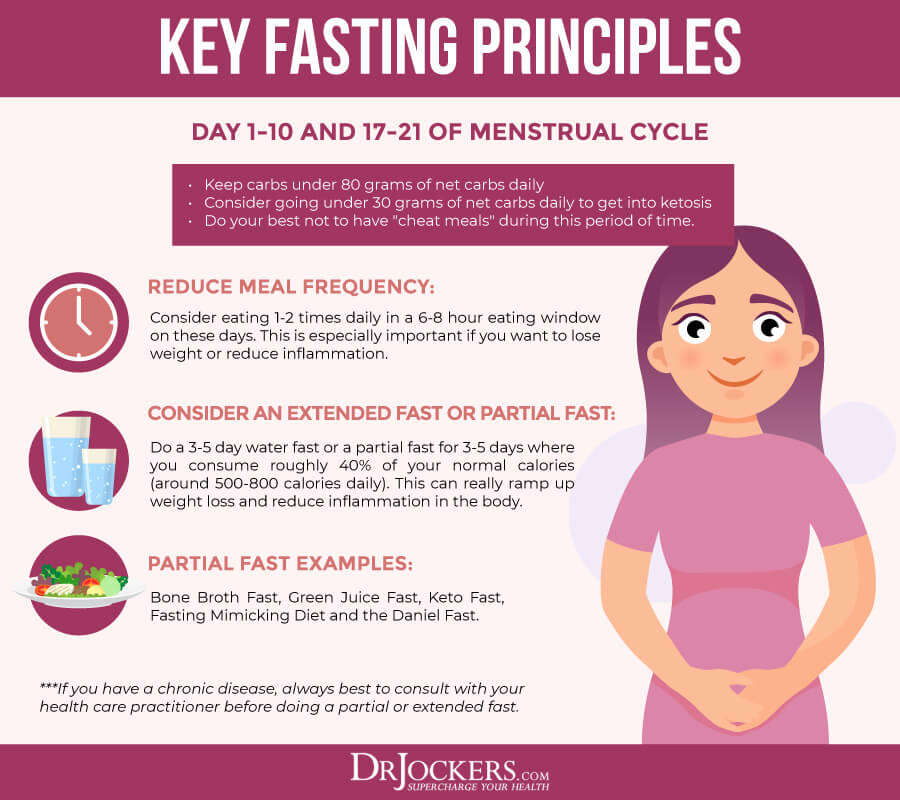
Getting Into Ketosis and Fasting
During these days, it is a great idea to follow a low-carb diet between 0 and 80 grams of net carbs daily to experience improved autophagy, increased energy, reduced inflammation, and improved fat burning. Please note that to get into ketosis you may need to go under 30 grams of net carbs daily.
I recommend that you follow an intermittent fasting schedule. Crescendo fasting, which you can learn more about here, is great for women. That can be done during both the feasting and fasting time periods. I also recommend that you consider a 3- to 5-day water fast or partial fast every few months during one of these windows.
If you have a lot of weight to lose or have chronic inflammation, you can do one of these fasts every month. Most people find extended fasting or partial fasting the easiest at the beginning of their menstrual cycle (days 1 to 5 or 2 to 6). You can learn more about water fasting here and partial fasting here.
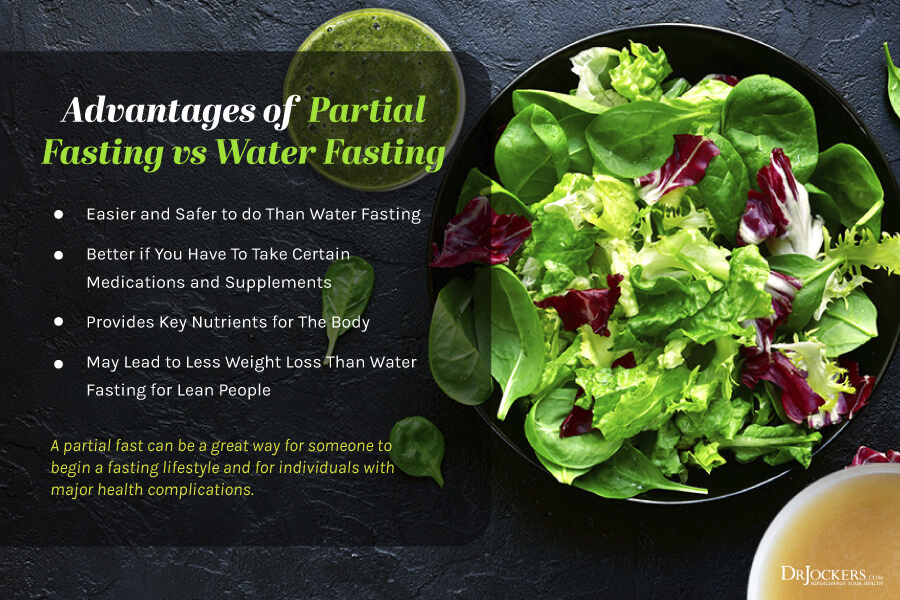
When To Feast
Not fasting, but focusing on feasting and nourishing your body throughout the day is particularly important during specific times of the month. The best time to feast includes Day 12 to 16 during ovulation and Day 22 to 28, a week before menstruation on a 28-day cycle.
The goal of this feasting period is to bring in building blocks and boost up insulin, estrogen, and progesterone levels. During this phase increase your net carbs to 80 to 150 grams per day. In some cases, you may even go up to 200 grams per day. During this phase, also make sure to have 1 to 1.5 grams of protein per kg of body weight.

Best Foods to Feast On
It is very important that you are eating nutrient-dense, anti-inflammatory foods throughout your menstrual cycle. Processed sugar, refined oil, artificial ingredients, processed foods, and junk food can increase inflammation, disrupt your hormonal health, and lead to all kinds of health issues. They should be eliminated. Instead, focus on real whole foods, such as greens, vegetables, low-glycemic index fruits, herbs, spices, healthy fats, and clean protein.
While you are feasting, your carb intake will be higher, however, it is important that you eat healthy carbs. Sweet potatoes, squash, carrots, beets, jicama, fruits, wild rice, quinoa, and raw honey are excellent choices.
For clean protein, make sure to eat plenty of grass-fed, organic meat products, pasture-raised beef, free-range poultry and eggs, and wild-caught fish. Add plenty of herbs, including turmeric, ginger, rosemary, and thyme, healthy fats, including avocado, coconut oil, and grass-fed butter or ghee, and greens and vegetables, including kale, lettuce, spinach, cucumber, broccoli, and celery.
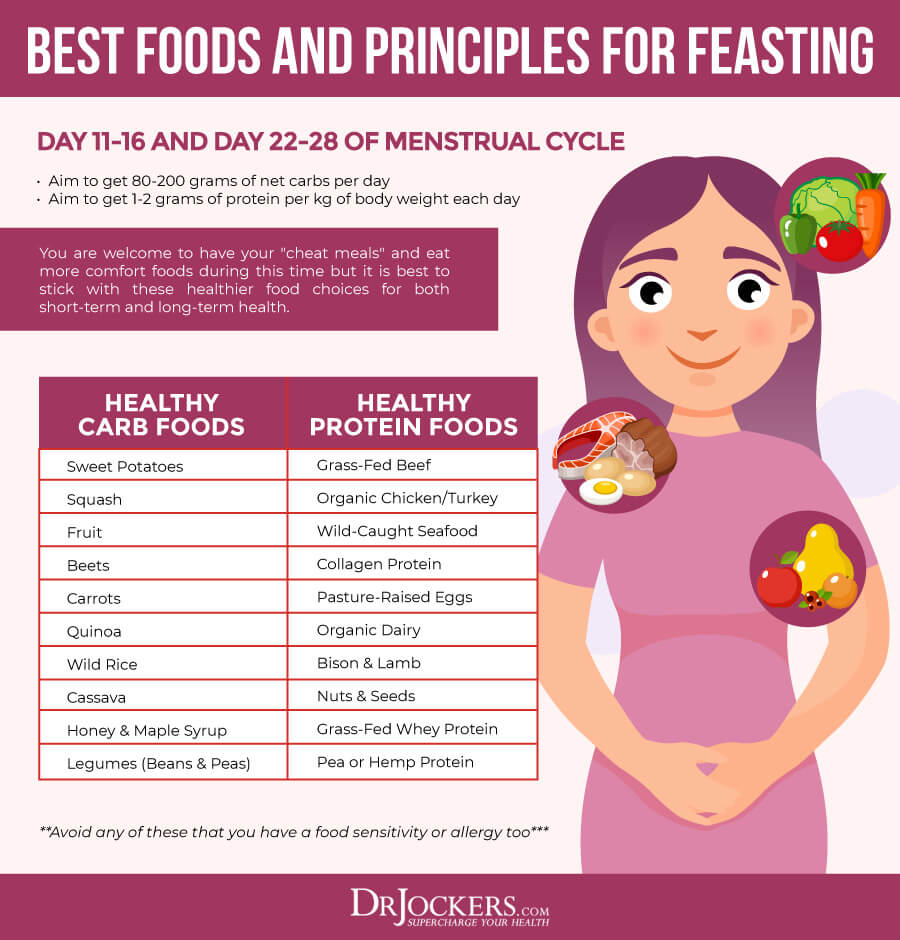
Supplements to Support Healthy Menstrual Cycle
To support a healthy menstrual cycle, you can use a variety of supplements along with feast famine cycling. Here is what I recommend:
B Complex Vitamins
B vitamins play an essential role in your menstrual cycle. B12 helps to protect your nervous system and metabolism and boosts your energy levels. It also plays an important role in the nourishment of red blood cells, which is important as you lose blood during menstruation. B9 plays an important role in your metabolism, mood, and sleep cycle.
B7, or biotin, is essential for healthy hormonal levels and may help with cramps. B6, or pyridoxal-5-phosphate (P5P), may help with bloating and improve hormonal health. B5, or pantothenic acid, is great for mood swings, energy levels, and stress relief. B3 or niacin is fantastic for mood swings, cramps, irritability, anxiety, and fatigue. B1, or thiamine, is fantastic for your energy levels or nervous system.
Taking a B Complex supplement is a smart way to support a healthy menstrual cycle and reduce symptoms of PMS and menstrual discomfort. Some great sources of B vitamins include sunflower seeds, macadamia nuts, almonds, broccoli, spinach, tuna, eggs, and trout. For optimal benefits, I recommend B Strong daily (22).
Probiotics
An unhealthy gut flora can disrupt your hormonal levels and interrupt your menstrual cycle. It can also increase your chance of infections and symptoms related to PMS and menstruation, such as bloating, cramps, weight gain, fatigue, and headaches.
Probiotics can help to keep a healthy vaginal flora, support hormonal health, optimize the menstrual cycle, and reduce PMS symptoms. Probiotic-rich foods include sauerkraut, kimchi, kombucha, kefir, and yogurt. I recommend that you take SBO Probiotics – Ultimate daily for supporting your menstrual cycle (23).
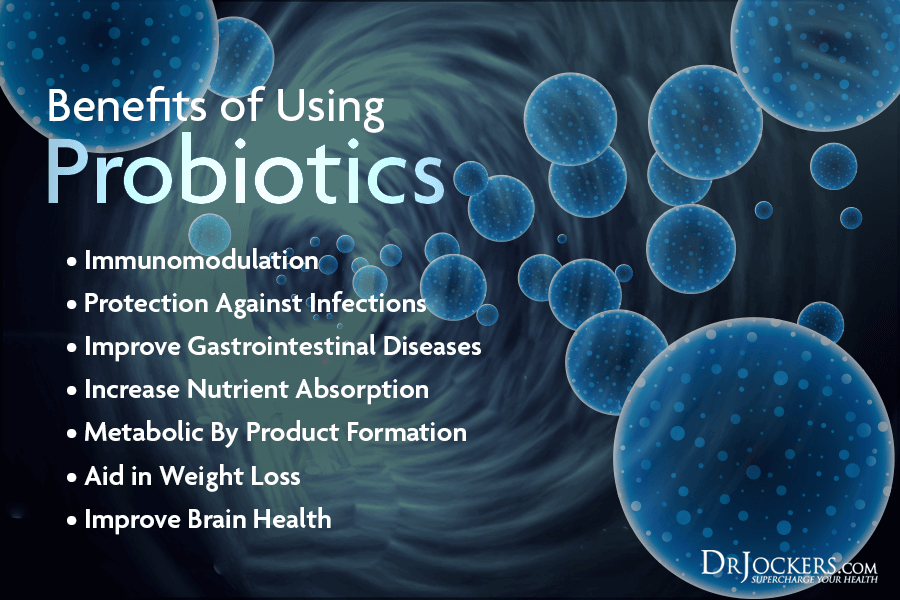
Zinc
Zinc is critical for a healthy immune system, but it also plays a role in estrogen and progesterone production and hormonal health. It also offers anti-inflammatory benefits. Zinc can reduce PMS symptoms, menstrual cramps, and pain, and lower the risk of dysmenorrhea and other menstrual cycle dysfunction.
Foods that are rich in zinc include pumpkin seeds, cashews, oysters, shellfish, and beef. I also recommend that you supplement with Zinc Charge daily to support your menstrual cycle (24).

Magnesium
Magnesium is a fantastic vitamin for women. It has relaxing benefits so it may help to lower mood swings and fatigue and increase energy. It can also help to relax your stomach muscles and elevate cramping and discomfort. It also supports red blood cells and female hormonal health.
Pumpkin seeds, spinach, chickpeas, salmon, and kale are some great food sources of magnesium. For optimal menstrual cycle support, I also recommend that you take Brain Calm Magnesium daily (25).
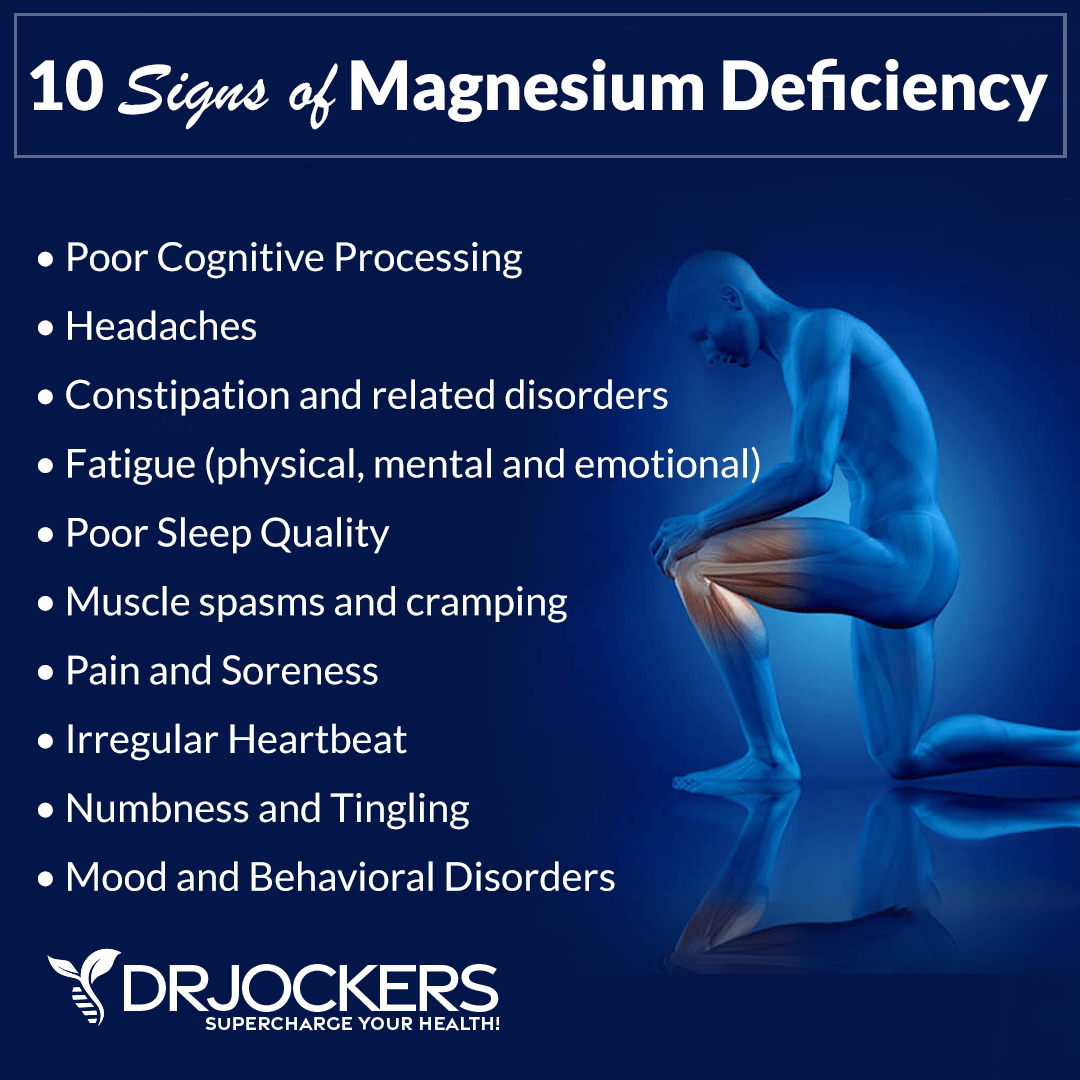
Fem Protect
If you are looking for a supplement that helps to optimize your menstrual cycle, I recommend Fem Protect. This supplement helps to balance hormonal health, female sex hormones, and the menstrual cycle with the help of hormone-supporting herbs and vitamins.
It is loaded with B vitamins and magnesium for your menstrual cycle and hormonal health. It also includes Calcium-D Glucarate which is a fantastic compound for hormonal health and detoxification. It helps to improve estrogen imbalance, balance your hormones, and support your menstrual cycle.
It has an optimal dose of green tea extract for antioxidant support and cramps, black cohosh for increased blood flow and fewer cramps, broccoli seed extract for bacterial balance and stomach discomfort, diindolylmethane for heavy periods and better estrogen breakdown, chaste tea extract for hormonal health and fertility, chrysin for estrogen dominance, and trans-resveratrol for hormonal balance (26, 27, 28, 29, 30, 31).
Fem Protect can help with bloating, bloating, cramps, low energy, mood swings, cravings, irritability, sleep troubles, and other symptoms related to your menstrual cycle. I recommend two capsules twice a day.
Final Thoughts
The menstrual cycle is a natural hormonal process that the female body goes through every month between puberty and menopause. To optimize your menstrual cycle and reduce menstrual symptoms, it is important that you practice feast famine cycling, eat nutrient-dense foods, and take vitamins that support your menstrual cycle.
Follow my recommendations to experience hormonal health, a smooth menstrual cycle, increased energy, better health, and more happiness. If you want to learn more about how to use intermittent and extended fasting strategies to burn fat, heal your body and transform your life, check out my book, The Fasting Transformation here.

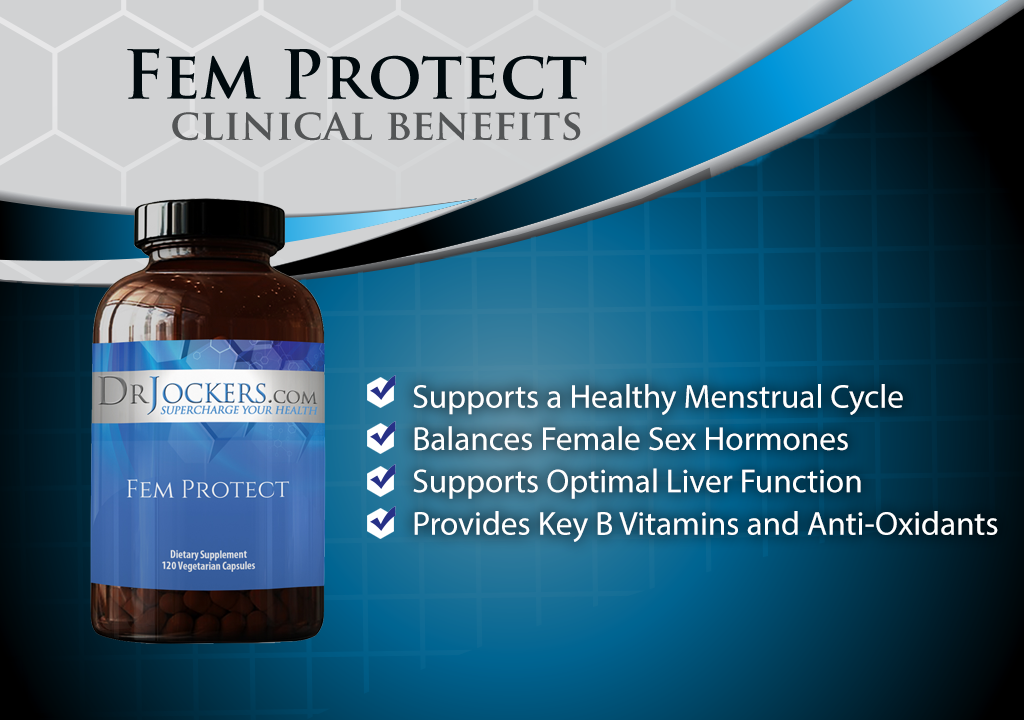
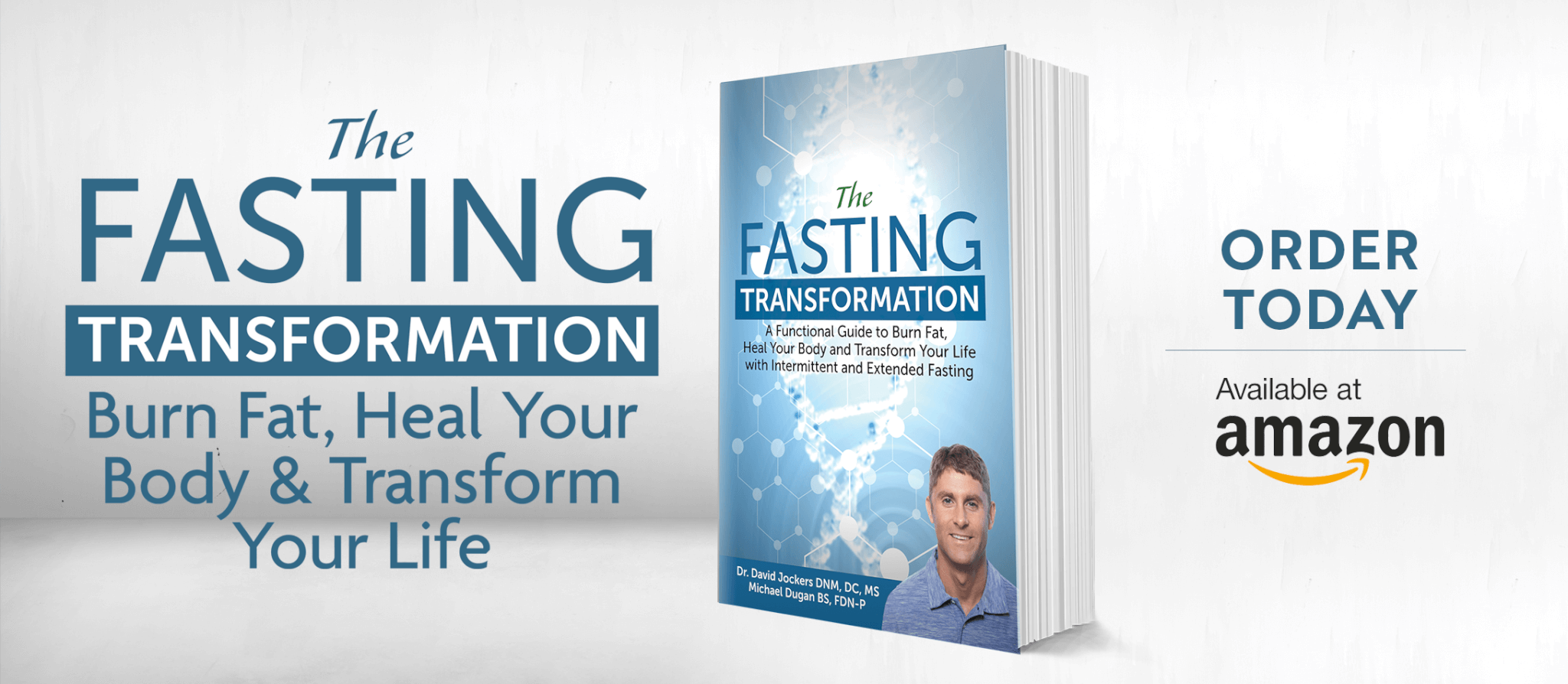



Thanks for this information! I’m a little confused about the dates. I do a little intermittent fasting, but am really curious about extended 3-5 day water fasts. For fasting windows… When you say day 1-10 in the follicular phase. Is that the first day after your menstrual phase ends? And then day 17 – 22 is the first day after the ovulatory phase ends? Does this mean no fasting during the menstrual and ovulatory phases of the cycle, but it’s ok during the luteal and follicular phases?
Yes day 1 is the first day of your menstrual cycle and it is the first day you menstruate. Day 17 would be the 17th day after your first menstruation. Hope that makes sense!
Many thanks for an excellent article, Dr Jockers. I’m currently writing a book specifically for active females (not athletes) and so am researching issues related to this topic. I have three questions: 1) You omit days 15 and 16 on your protocol, so what should we be doing during this time? 2) I’m unclear on why the suggested protocol on days 1-10 (when estrogen is very low) and days 17-22 (when estrogen is much higher) is the same? 3) I’ve been looking at Dr Stacy Sims’ work and she is adamantly anti-fasting and keto for women. Both have worked for me to help me stay lean and healthy so I am assuming you’ve worked extensively with females and not seen massive cortisol issues occurring? Many thanks in advance…
Bascially your body needs insulin to build up hormones before menstruation and ovulation. Outside of those windows, it is a good time to keep insulin low to improve insulin sensitivity, reduce inflammation and benefit from autophagy and ketones.
This cycle increases insulin at key times to build the hormones needed for both menstruation (Day 1) and Ovulation (roughly Day 14).
Many thanks for your response. You didn’t answer the question related to the two missing days, so it would be great to understand this better:
1) You omit days 15 and 16 on your protocol, so what should we be doing during this time?
Thanks so much, Tanya
Those are feasting days. Days 11-16 are feasting and carb cycling as some people don’t ovulate right at Day 14. Once ovulation hits, you can do fasting and low carb again.
Hi Dr Jockers
Wondering if you received my above message regarding days 15 and 16 of the menstrual cycle?
Many thanks,
Tanya
Hello Dr. Jockers,
What should be caloric intake on feasting days?
Thank you
Nellie
It should be roughly 2000-3000 calories depending upon how much you are able to consume.
Dr Jockers, If I have light spotting several days before my period really begins, does the first day of spotting count as day 1, or does the first day of real flow count as day 1?
Thank you for your book, i have really enjoyed it. I only wish this article had been in it!
Hello Hilary,
Great question, the first day of spotting would technically count as day 1. Blessings!